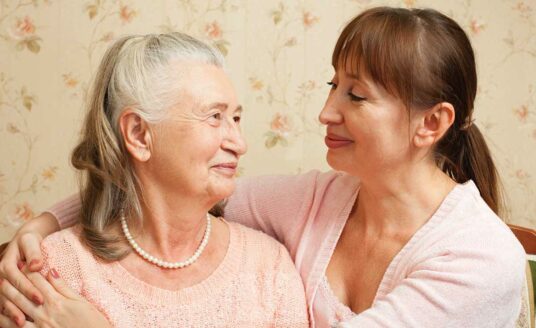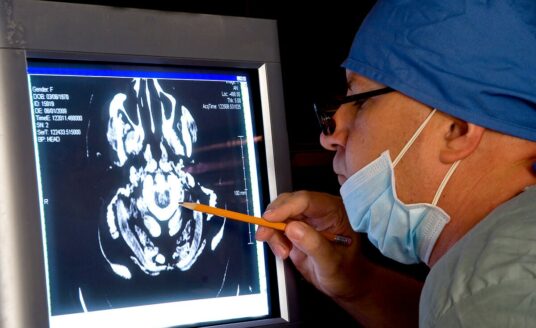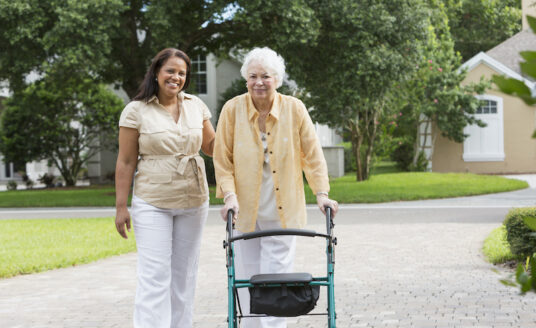Home is that place we go for rest, reassurance and comfort—a place to restore ourselves physically, mentally, and emotionally.
For most senior adults, home is the place they never want to leave, even as physical and/or cognitive challenges make it ever more difficult to safely reside there.
But what if a sudden illness or injury required a healing, restorative environment that their home does not have? Or an inevitable decline in health makes the home unsafe for the senior? Are there ways to create an optimal healing environment in the home, and how do we define “healing?”
The Unpredictable
Seventy-year-old Betty is in reasonably good health. She lives alone, and though she has some arthritis issues and hypertension, she is still able to drive and perform light housework. Her daughter and son-in-law check in on her and assist with heavier household duties.
One day, Betty catches her foot on an upturned rug and crashes to her living room floor, fracturing her ankle. When she is released from the hospital, she is confined to a wheelchair. Betty has, at least temporarily, gone from independence to co-dependence. However, she is determined to remain in her home. What happens now?
Her daughter and son-in-law will either have to become more involved onsite caregivers, seek the assistance of other family members, employ professional home care services, or provide a combination of all of the above.
Betty’s physical therapist can suggest recommendations about changes to the home that will make it easier for her to navigate. Wheelchair ramps, additional handrails, a raised toilet seat, grab bars, and perhaps a walk-in tub and other changes in the bathroom will make it more accessible.
A consultation with a geriatric care manager can provide additional insight, including other home revisions, medical needs, home care services offerings, and resources, In addition to physical therapy and supervised exercises, nutritional guidance critical to optimal health can be provided.
Betty could also temporarily enter a rehab center for these services, while her home undergoes modifications.
Betty and her family might consider a home safety and accessibility assessment, which is an evaluation of a person’s home living environment with the goal to increase safety.
According to MEDICAREFAQ, Medicare beneficiaries recently in the hospital who have a doctor’s prescription for home safety assistance may be eligible for benefits. Also, those receiving home health could be eligible for an assessment. The site also provides further information about the assessment.
As falls are the #1 health risk for senior adults, Betty may be more likely to fall in the future if she does not fully recover from her injury. Fall prevention should be a primary concern. The National Council on Aging provides a huge amount of information on its “Falls Free Initiative.”
There are certified aging-in-place specialists (CAPS) who understand the aging-in-place home remodeling needs and market. They can advise on remodeling projects, building standards, and product ideas. More information about CAPS can be found on the National Association of Home Builders website.
With therapy, determination, time, and modifications to the home, Betty has a good chance of recovering some or most of her previous mobility and independence.
The Inevitable
Joe is a 68-year-old widower. He was recently diagnosed as being in the early stages of dementia and is diabetic. For now, he is still able to maintain his home and finances, and continues to drive, though this has become a concern for his family. Joe is not ready to give up his home.
His family has more time to consider what needs to be done than Betty’s did. They regularly consult with Joe’s physician to gain an understanding of his dementia is progression. They have brought in-home health services to supervise Joe’s management of his diabetes, including glucose monitoring, medication management, and his adherence to a proper diet.
“Healing” for Joe is about maintaining his physical and cognitive health for as long as possible in his home. He and his family, too, would benefit from the counsel of a geriatric care manager, who can anticipate Joe’s future needs and the resources to provide for them. With this information, a home safety assessment may be a good idea to begin the home modifications required to keep him safe.
If, in the future, Joe requires a fulltime family caregiver to live in the home, a daughter already has stepped forward. She will find it increasingly challenging as Joe ages, but her home care services organization offers respite care, bringing someone into the home to give her hours, days, or weeks away from the home to rest. And the geriatric care manager can advise her when it is time for Joe to move into a senior living community.
Quality of Life
As people age, healing from injury and illness becomes more challenging, even as they want to remain in their home as long as possible. There is something to be said for the quality of life as determined by the emotional uplift being in the home brings. In fact, there have been some recent studies that link a happier senior to better physical outcomes.
With some planning and work, home can still be a place for rest, reassurance, and comfort—a place to restore seniors physically, mentally and emotionally.
There truly is no place like home, so if you’re interested in learning more about our in-home care services, check out our resources to keep seniors at home including Care Management, Senior Support Solutions and Home Health Care.
| Whether you choose independent living, assisted living, memory care, or skilled nursing, your experience at Bethesda will be filled with compassionate care and meaningful connections. If you are considering independent living, we encourage you to tour our communities, including Bethesda Barclay House – Clayton, Bethesda Gardens – Kirkwood, Bethesda Orchard – Webster Groves, Bethesda Terrace – South County, Village North Retirement Community – Florissant, and The Oaks at Bethesda Villas – Kirkwood/Webster. If you have any questions about our non-profit senior living communities, contact us today. |
Want to find out more?
If you’d like to stay up to date with Bethesda Health Group, sign up here to receive our blog and newsletters!
"*" indicates required fields
Related Articles
Want to find out more?
If you’d like to stay up to date with Bethesda Health Group, sign up here to receive our blog and newsletters!
"*" indicates required fields



